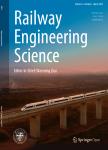A comparative study of automotive trip characteristics between older drivers and others among densely inhabited district and other areas
A comparative study of automotive trip characteristics between older drivers and others among densely inhabited district and other areas作者机构:Department of Civil EngineeringNagoya University Institute of Materials and Systems for SustainabilityNagoya University Institute of Innovation for Future SocietyNagoya University
出 版 物:《Journal of Modern Transportation》 (现代交通学报(英文版))
年 卷 期:2016年第24卷第3期
页 面:177-186页
学科分类:08[工学] 082303[工学-交通运输规划与管理] 082302[工学-交通信息工程及控制] 0823[工学-交通运输工程]
基 金:partially supported by the Center of Innovation Program from Japan Science and Technology Agency JST
主 题:Older driver Travel behavior Living areaTrip frequency - Trip length Destination distribution Non-home-based (NHB) trips
摘 要:This paper examines older driver's automotive trip (abbreviation: trip) characteristics which include trip frequency, trip length, destination distribution, and non- home-based (NHB) trips. A two-month experiment of 108 participants was carried out to collect GPS tracking data in Aichi Prefecture, Japan. To identify the effect of living area, a comparative analysis between older drivers and others is conducted in densely inhabited district (DID, i.e., urban) and other areas (non-DID, i.e., suburban, rural, etc), separately. The present study found that there was no sig- nificant difference between the trip characteristics of older drivers and others who were living in DID. Thus, we suggest that the education of safety driving and the rec- ommendation of public transportation should be given to DID-living older drivers. However, the results of non-DID reflected that older drivers' trip frequency, trip length, destination, and NHB trips rate were shorter and lower than others'. This implies that electric vehicles may be suit- able for promotion among older drivers in suburban and rural area. Furthermore, the regression analysis confirmed that "older driver" was a significant independent variable on trip frequency, trip length, and NHB trips, and there were interaction effects between "older driver" and "living areas" on all trip characteristics.




